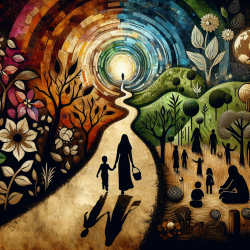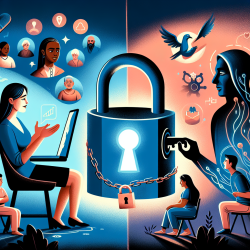Introduction
Transgenerational trauma (TGT) is a complex phenomenon where the effects of traumatic experiences are passed from one generation to the next. The research article "Transgenerational trauma in Rwandan genocidal rape survivors and their children: A culturally enhanced bioecological approach" provides valuable insights into how trauma is transmitted and offers a framework for understanding and addressing these challenges. This blog aims to help practitioners improve their skills by implementing the outcomes of this research or encouraging further exploration.
Understanding Transgenerational Trauma
The study conducted in Rwanda focuses on mothers who survived genocidal rape and their children. It employs a culturally enhanced bioecological theory to explore how trauma is transmitted across generations. This approach integrates individual, family, cultural, and societal factors, providing a comprehensive understanding of TGT.
Key Findings and Implications
The research highlights several critical findings:
- Complex Interactions: The study reveals that trauma transmission is influenced by a combination of personal characteristics, attachment relationships, family systems, and socio-cultural structures.
- Resilience and Strength: Despite the challenges, some mothers were able to form positive bonds with their children, highlighting the potential for resilience and healing.
- Need for Integrated Approaches: A culturally enhanced bioecological framework can guide the development of policies and practices to mitigate TGT and support healing.
Practical Applications for Practitioners
Practitioners can draw several lessons from this research to improve their interventions:
- Holistic Assessment: Consider the multi-dimensional factors influencing trauma transmission when assessing and planning interventions for affected families.
- Cultural Sensitivity: Incorporate cultural understanding into therapeutic approaches to better connect with clients and address their unique needs.
- Support Systems: Strengthen community support networks and provide resources to enhance resilience among survivors and their children.
Encouraging Further Research
While the study offers valuable insights, it also highlights areas for further exploration. Practitioners are encouraged to engage in research that expands on these findings, particularly in different cultural contexts, to enhance the understanding of TGT and develop effective interventions.
Conclusion
Understanding and addressing transgenerational trauma is crucial for creating positive outcomes for children and families affected by past atrocities. By applying the insights from this research, practitioners can contribute to breaking the cycle of trauma and fostering resilience and healing in affected communities.
To read the original research paper, please follow this link: Transgenerational trauma in Rwandan genocidal rape survivors and their children: A culturally enhanced bioecological approach.










